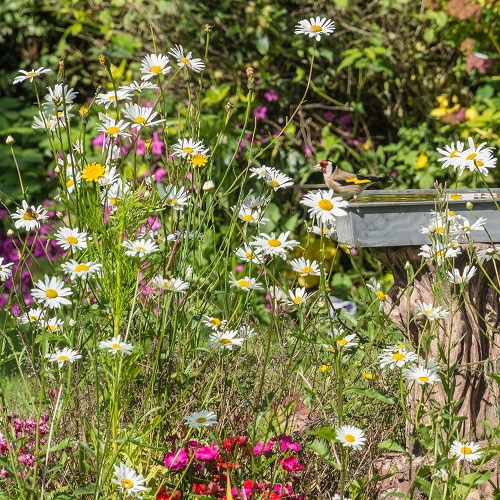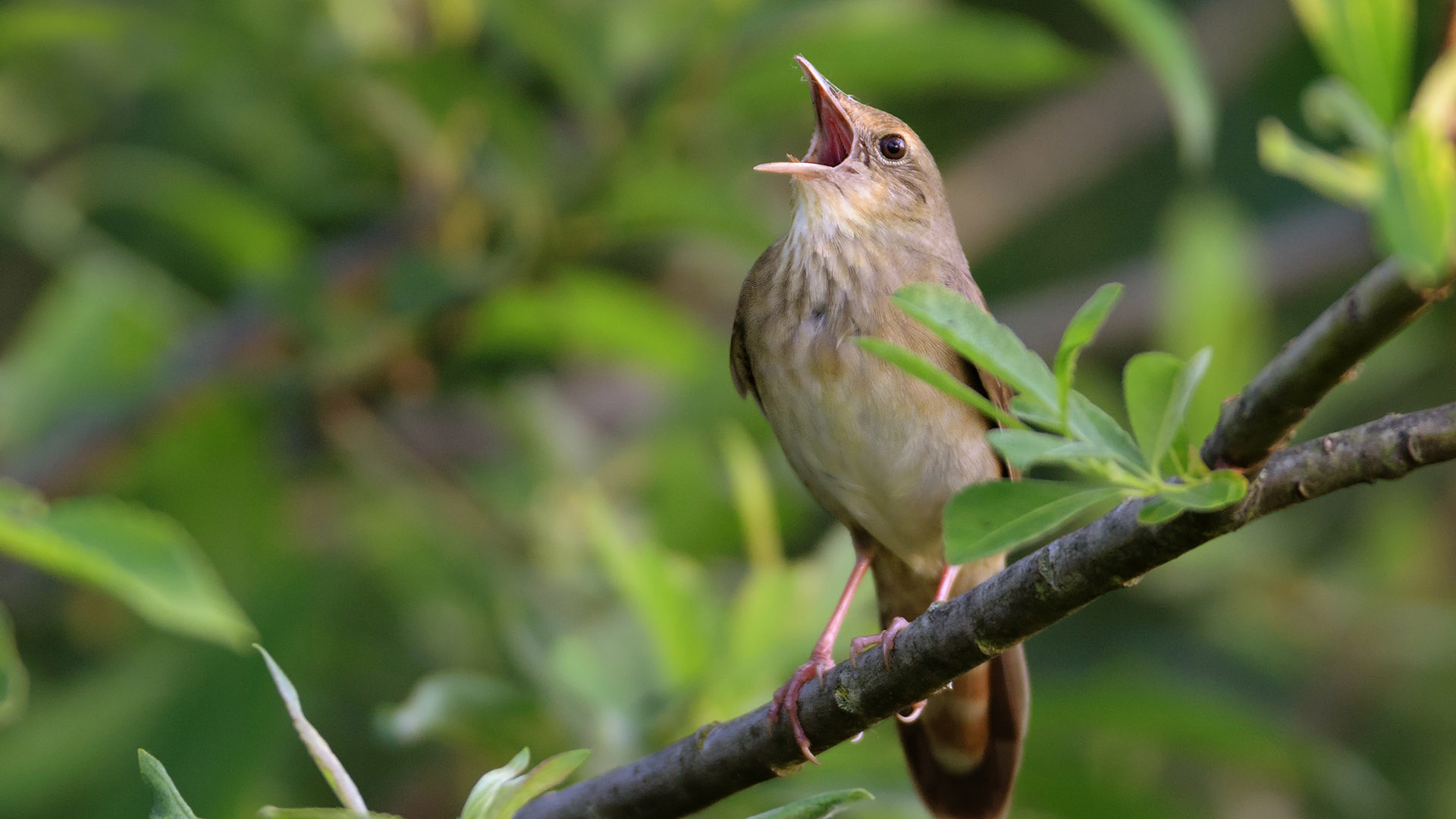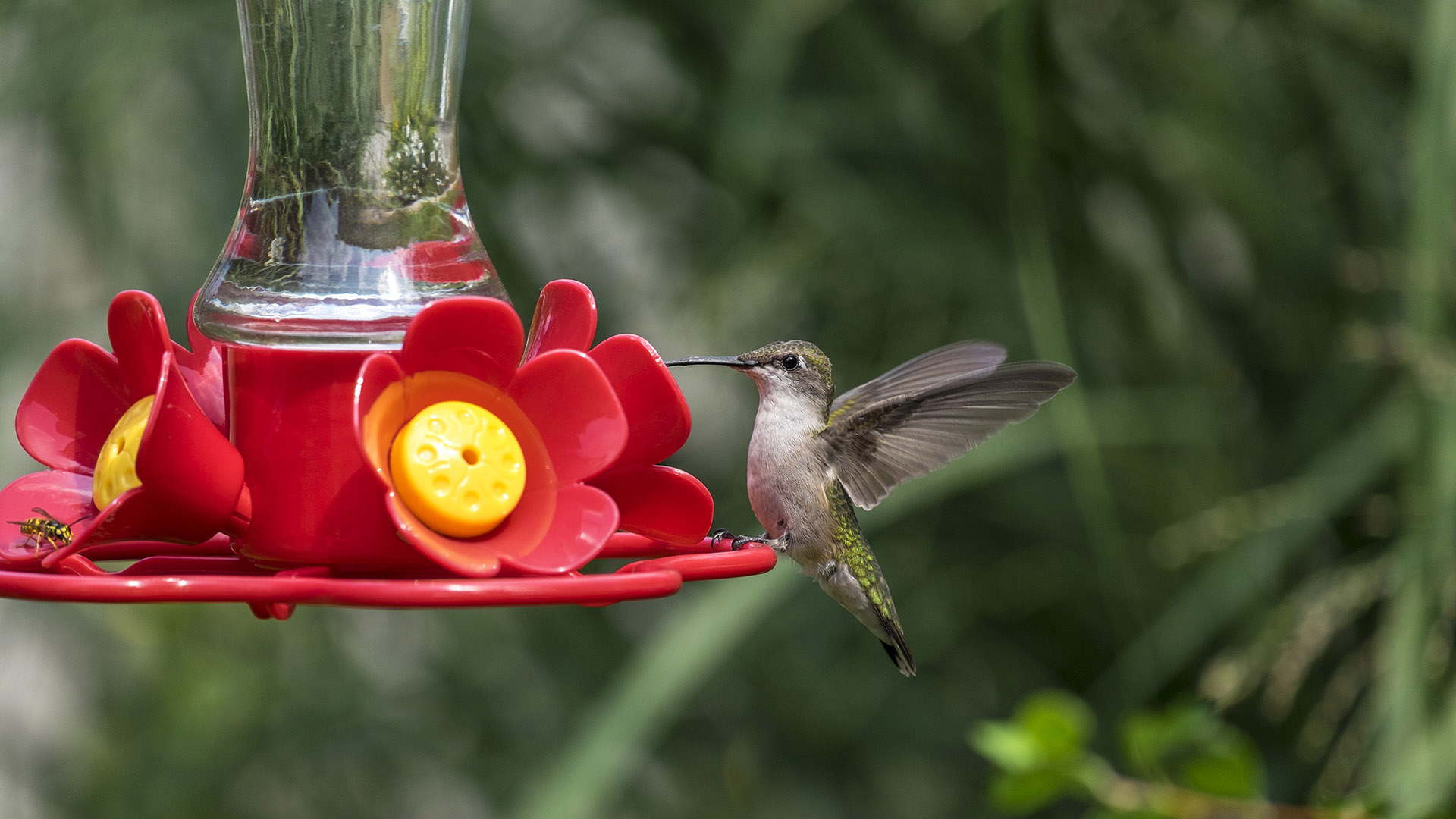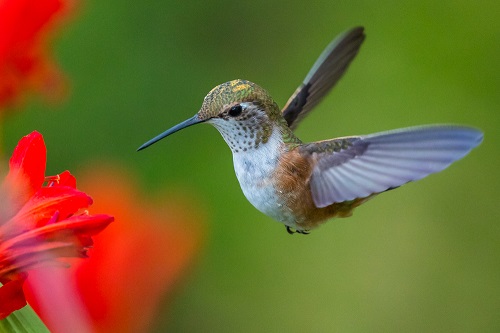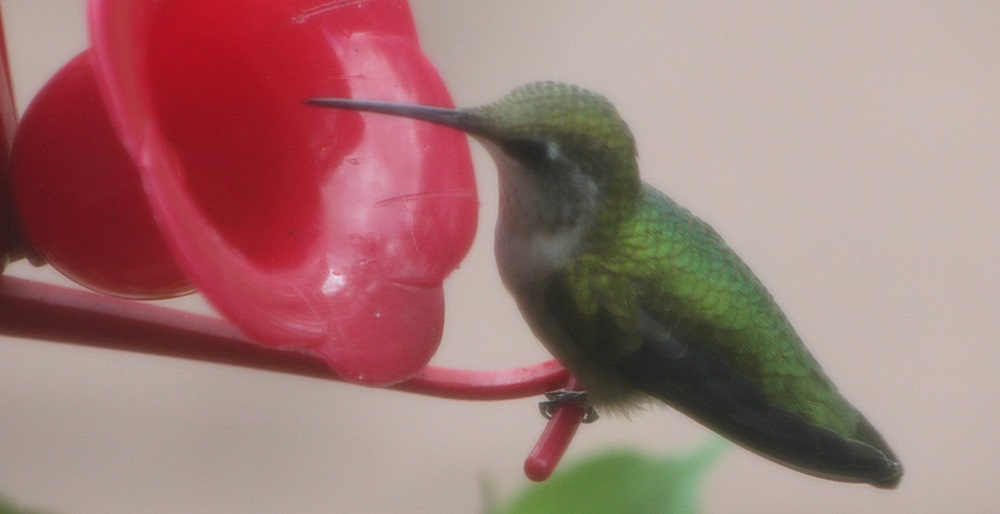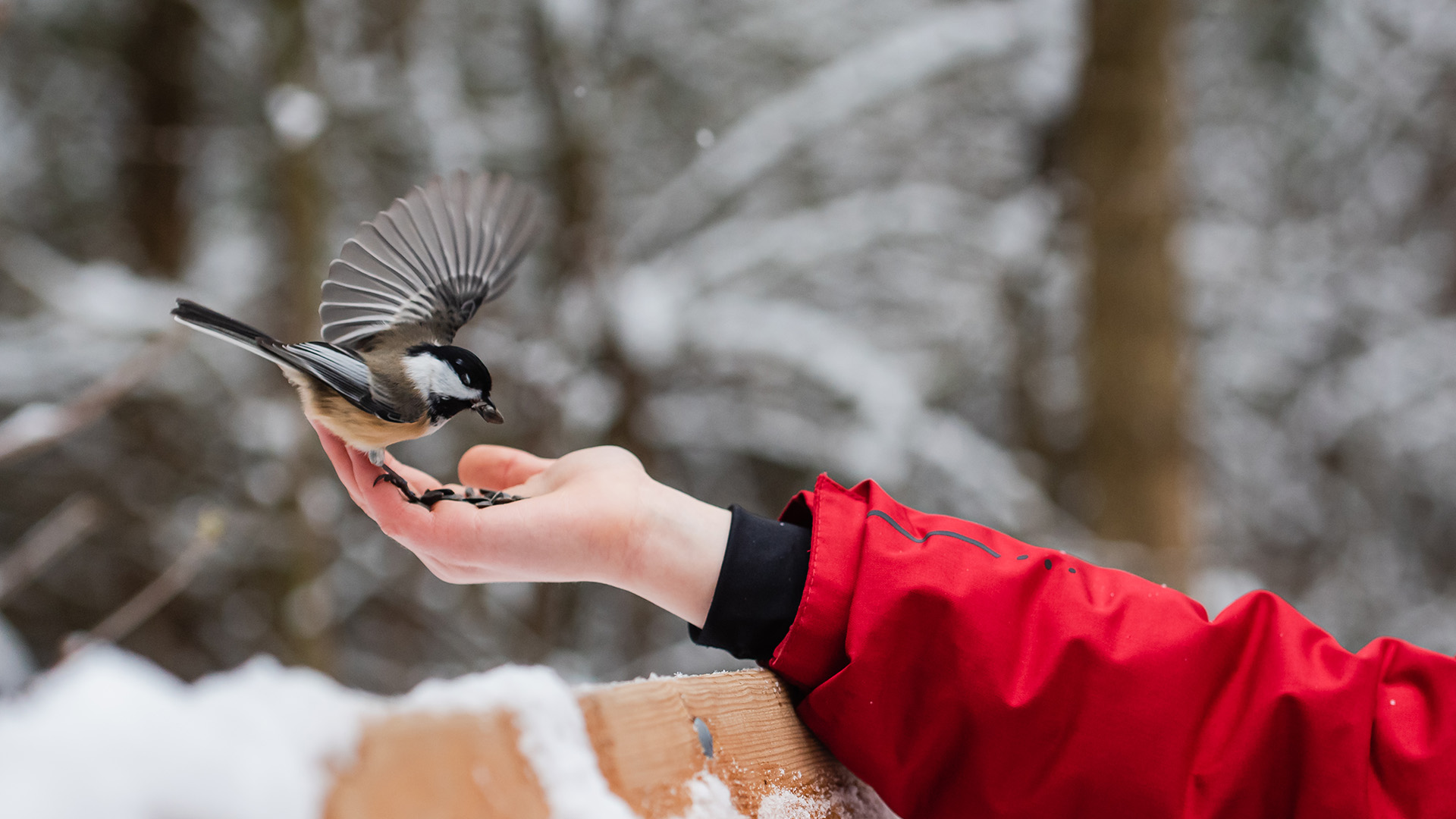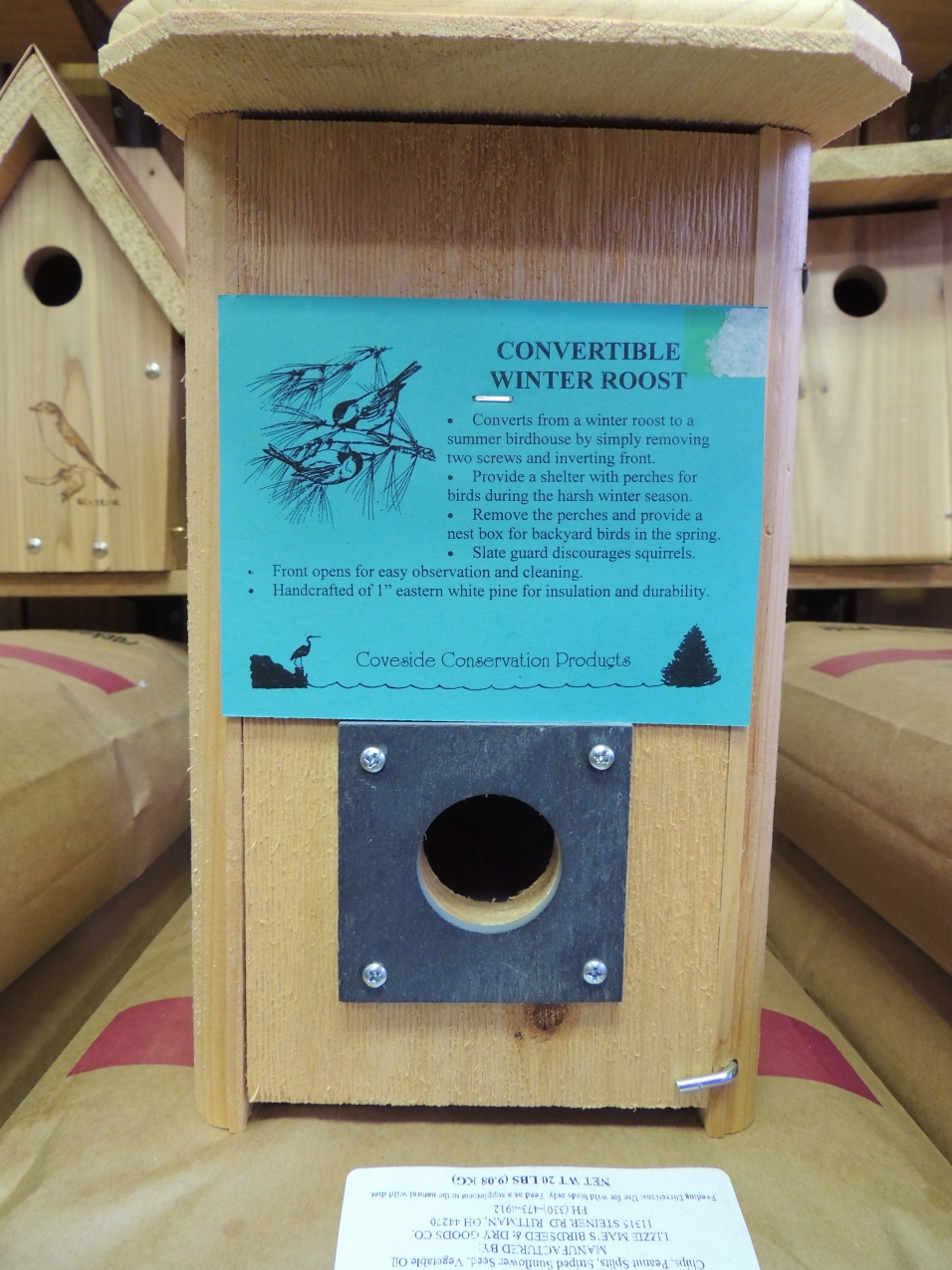Landscaping for wildlife can be as easy as planting a couple of bushes, or as complex as your gardening interest will carry you. The four essential ingredients are: food, water, shelter and places to raise young. Start by examining what your yard already provides. Then introduce new elements to supplement and enhance this site for wildlife.
Food
Shrubs and trees provide fruits and seeds throughout the year. Choose native plants, such as blueberry, sumac and viburnum. Perennial and annual flowers provide nectar for both butterflies and hummingbirds. Hummingbirds visit bee balm, wild columbine and cardinal flower. Butterflies enjoy butterfly weed, purple coneflower and phlox. You can add feeders to provide a variety of seeds for birds through the winter months.
Water
Provide water by adding a birdbath or installing a small pond. Heaters added to birdbaths in winter ensure a year round supply of water. A small fountain will add the sound of running water and increases the birds’ activity. Ponds may be easily constructed in most yards, and provide a home for dragonflies, fish, newts, frogs and other aquatic life, as well as water for small mammals.
Cover
Many of the same trees and shrubs used for food also protect animals from weather and predators. Include evergreen and deciduous shrubs. A small brush pile in a corner of your yard provides cover for birds or an over wintering spot for many insects or moths. Rock, log and mulch piles offer effective cover. Small mammals, reptiles, amphibians and a great variety of insects find homes in these structures.
Places to Raise Young
Evergreens, deciduous trees, and shrubs provide additional nesting areas for birds. Rabbits, shrews, mice, snakes and salamanders lay their eggs or raise young under boughs of plants as well as in the rock, log, or mulch piles. Aquatic animals, such as frogs, toads, and newts, deposit their eggs in the ponds. Butterfly eggs and caterpillars find safety among the herbs, flowers, shrubs, and trees. You can supplement cavity trees with nest boxes for bluebirds, chickadees, wrens, and purple martins.
Sustainable Gardening
Wildlife thrives in a healthy habitat with the food sources appropriate to their ecosystem, clean water, and plants free from harmful chemicals. Practicing sustainable gardening with the use of native plants, water conservation, and not using pesticides or herbicides ensures wildlife abundance.
SOURCE:
National Wildlife Federation
About Backyard Birds
Backyard Birds is an independent, family-owned wildlife specialty store founded by the late Roger Ford in 1996. We offer everything you need from creating an inviting wildlife habitat to finding unique gift items for nature lovers.
Visit our store and meet our friendly, knowledgeable staff. We are passionate about birding and would be happy to answer any questions. Give us a call or stop by our store to tell us when you’ve spotted those migrating birds in your backyard. We enjoy hearing from you!

